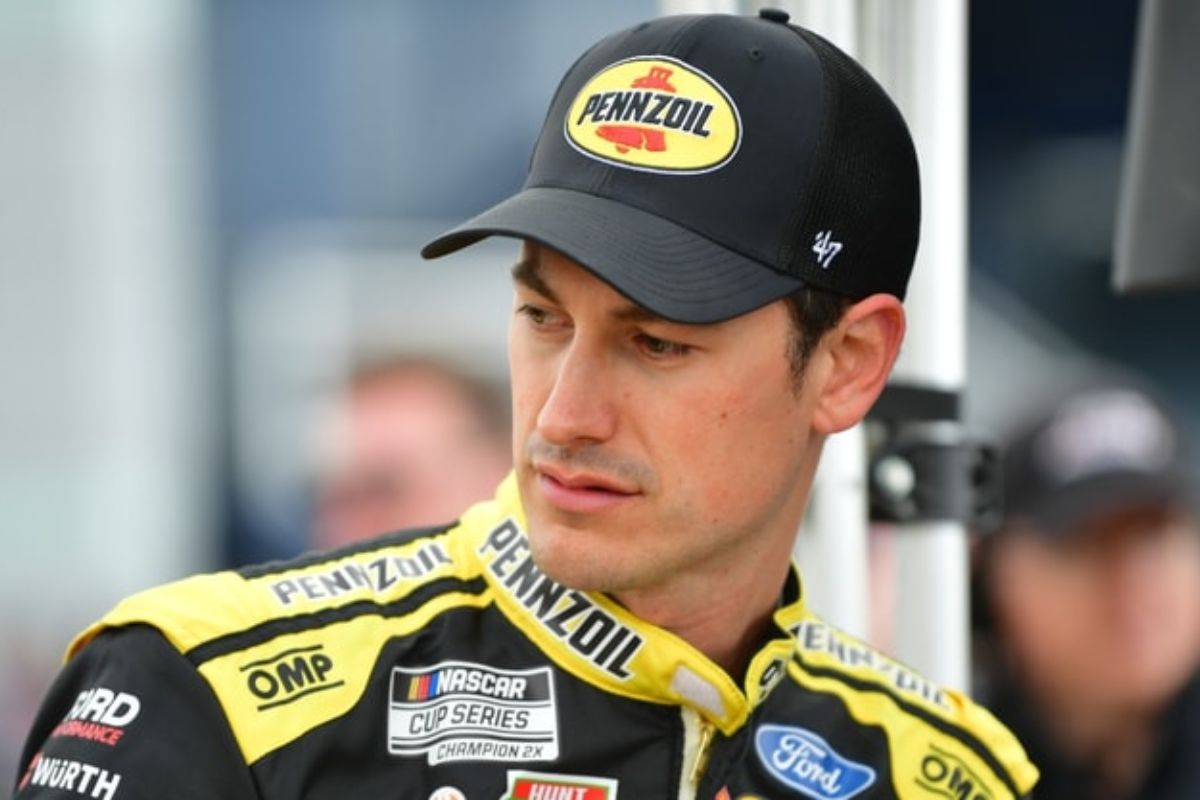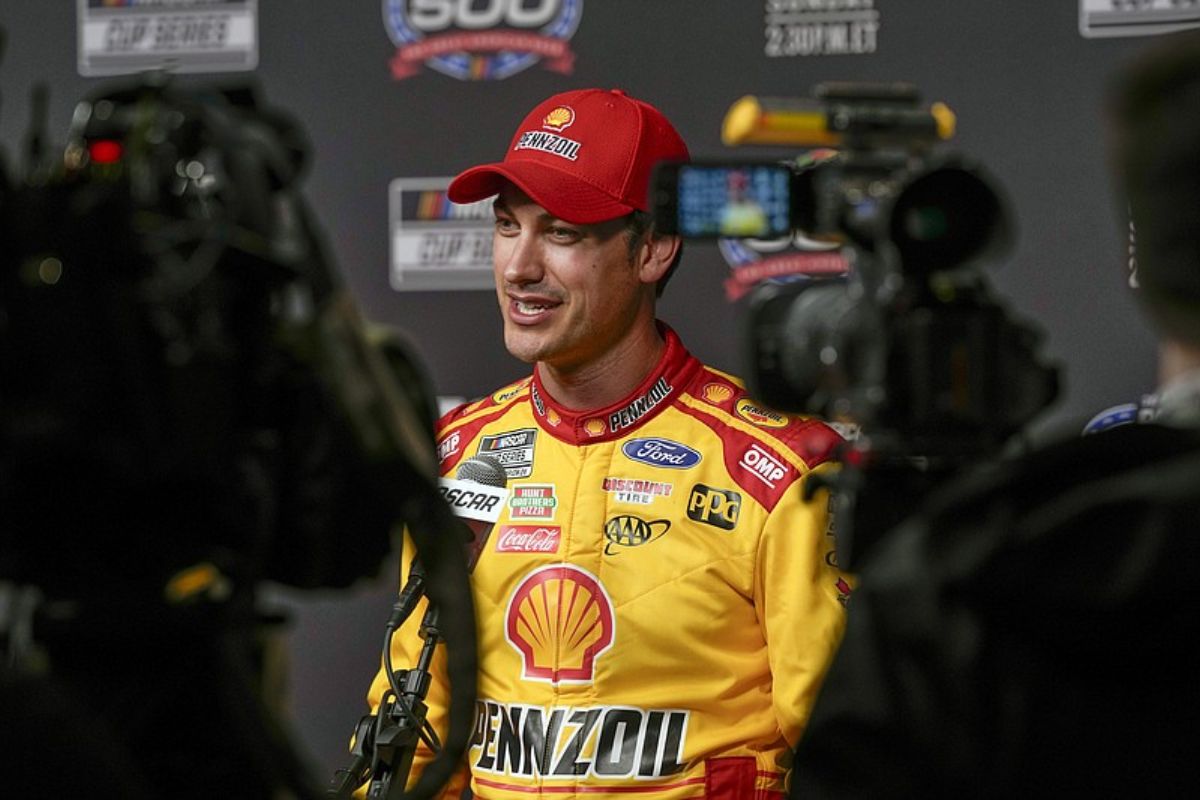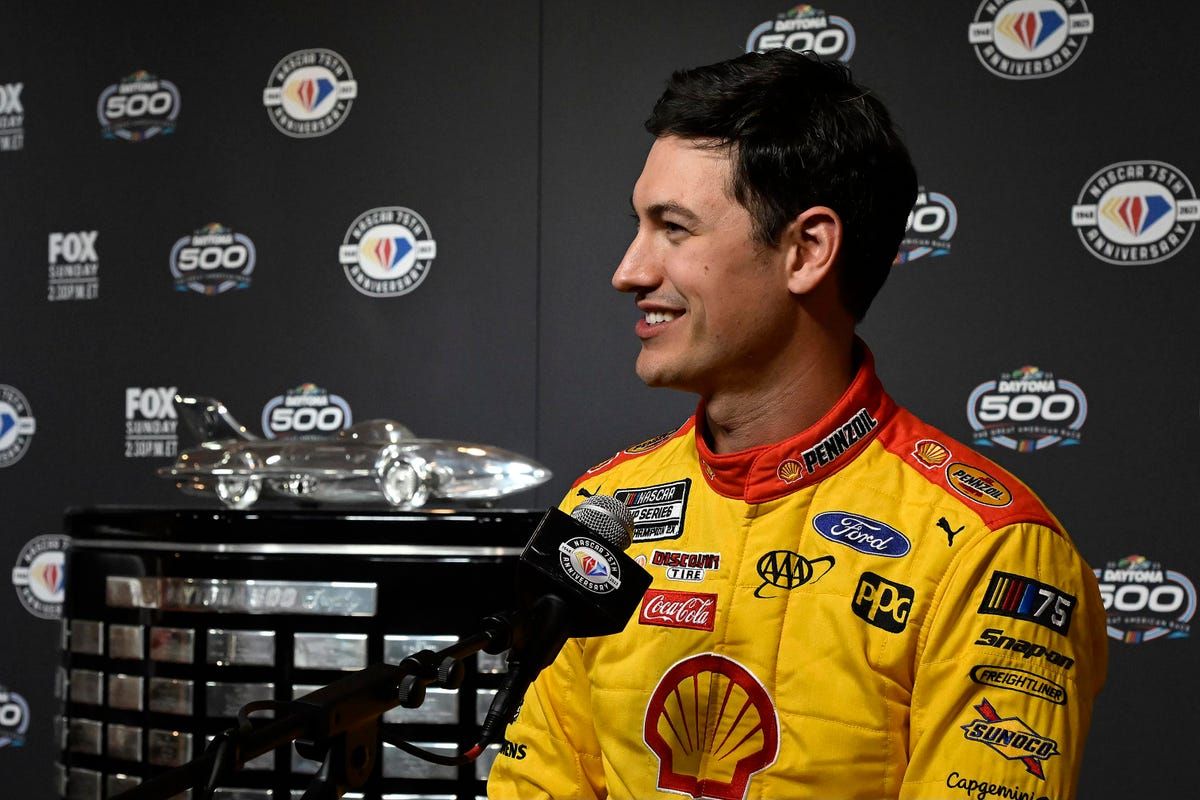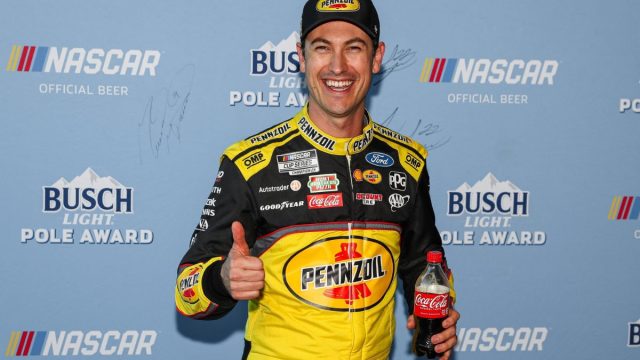Joey Logano Reveals Martinsville Secret: In the highly competitive world of NASCAR, strategic creativity often distinguishes the front-runners from the rest of the pack. Joey Logano, with the sharp guidance of his crew chief Paul Wolfe, revealed a surprising race strategy that propelled him to a commendable sixth-place finish at Martinsville. This revelation highlights the crucial role of early race decisions and the dynamic adaptability required to excel on such a distinctive track. As Logano credits this unexpected approach to his team’s success, one can’t help but ponder the broader implications of their strategy on future races. The intriguing synergy between driver and crew chief beckons a closer examination, promising insights into the nuanced art of motorsport strategy.
Key Takeaways
- Joey Logano’s Martinsville performance was significantly boosted by a strategic call from crew chief Paul Wolfe.
- Early race strategy at Martinsville is crucial due to its unique challenges like tire and brake wear.
- Wolfe’s strategic decision-making highlighted the importance of adaptability and precise timing for pit stops.
- Logano’s sixth-place finish underscored the effective driver-crew chief collaboration in navigating the race’s complexities.
- The team’s bold strategy not only led to a race lead but also showcased their ability to innovate under pressure.
Joey Logano’s Impressive Performance at Martinsville
Paul Wolfe, Joey Logano’s crew chief, made a critical strategy call during the initial stage of the race, greatly enhancing his remarkable performance at Martinsville Speedway and setting the stage for a commendable sixth-place finish despite facing adversity. Paul Wolfe did not make this decision lightly, as the unique, tight, and physically demanding half-mile oval track at Martinsville often dictates the flow and outcome for teams through early race strategy. The challenges presented by this venue are well-documented, with its propensity for causing wear on tires and brakes, making strategic timing for pit stops and adjustments paramount.
"Consistency is what you look for, and I don't believe a call should be different end of the race vs. middle of the race." Joey Logano on late-race restart.
Also hear from Chase Briscoe and Martin Truex Jr.: https://t.co/TNUdhKq6F3
📹@TreyLyleVT pic.twitter.com/CVezSvmlKW
— Frontstretch (@Frontstretch) April 6, 2024
Wolfe’s strategic awareness was on full display as he navigated Logano through the complexities of the race. The decision to prioritize track position over immediate adjustments during the first stage allowed Logano to maintain a competitive edge, even as various challenges emerged. This approach required a deep understanding of Martinsville’s unique demands, as well as a keen sense of timing and adaptability.
The early strategy call was a gamble, balancing the immediate need for speed with the long-term requirement for a car that could handle the rigors of Martinsville’s punishing track. Wolfe’s decision highlighted the importance of strategic foresight in NASCAR racing, where every call can have significant implications for the outcome. Logano’s ability to stay in contention and secure a sixth-place finish, despite the hurdles encountered, speaks volumes about the effectiveness of this approach and the synergy between driver and crew chief. This performance at Martinsville Speedway is a reflection of the careful planning and strategic execution that are the hallmarks of top-tier NASCAR competition.

Logano’s Gratitude Towards Crew Chief
Reflecting on the strategic decisions made during the race at Martinsville Speedway, Logano expressed deep appreciation towards his crew chief, Paul Wolfe, for the bold strategy that greatly influenced their performance. This acknowledgment highlights a key moment in the event where the team’s daring move initially propelled Logano into the race lead. Despite encountering tire issues as the race neared its conclusion, the decision to adopt an aggressive stance on strategy showcased not only the team’s willingness to take calculated risks but also their adaptability under pressure.
“I’m glad we had the cajones to do it. It was a bit of a high-risk play. We were the only team to do it but worked out pretty well until the left wheel came apart in the last like 20 laps. It started chunking and vibrating, we lost a lot of grip, unfortunately.” – (Logano)
Logano’s gratitude for Wolfe’s guidance and strategic acumen is a reflection of their collaborative strength. It emphasizes an essential aspect of racing often overshadowed by the driver’s prowess—the symbiotic relationship between driver and crew chief. This partnership’s dynamics can have a significant impact on the team’s overall performance, with strategic calls from the pit box often being as vital as the driver’s execution on the track.
The appreciation Logano extends to Wolfe is more than just acknowledgment of a single race’s strategy; it’s an affirmation of the positive trajectory their team is on. This episode at Martinsville serves as a microcosm of their season’s approach—embracing risk, innovating under duress, and valuing the collective over individual glory. As they navigate the challenges of the racing season, this moment of reflection and gratitude towards Wolfe not only strengthens their bond but also reinforces their commitment to pushing the boundaries of their performance.
👀 "I'm glad we had the cajones to do it. It was a bit of a high risk play."@joeylogano lauded crew chief Paul Wolfe's call to take 2 tires at the end of Stage 1, which helped net him another top 6 finish.
More on Behind The Wheel TOMORROW @ 9 am ET → https://t.co/1aUirPWIgB pic.twitter.com/EEMyvcbKTe
— SiriusXM NASCAR Radio (Ch. 90) (@SiriusXMNASCAR) April 9, 2024
Controversy Surrounding Richmond Restart
Amid the high-speed drama at the Toyota Owners 400 in Richmond, Logano’s perspective on the controversial restart, which potentially cost teammate Martin Truex Jr. a victory, highlights a growing concern over the consistency of NASCAR’s officiating decisions. The incident has sparked a wide array of discussions within the motorsports community, with Logano’s insights shedding light on the complexities of race control’s decision-making process. His remarks emphasize the critical need for transparency and fairness in the enforcement of racing rules, especially in moments that can greatly impact the outcome of a race.
Logano’s commentary on the situation at Richmond serves not only as a critique but also as a call to action for NASCAR. The controversy surrounding the restart—where the fine line between strategic brilliance and rule infringement becomes blurred—raises questions about the clarity of racing regulations and the interpretive leeway given to officials. This incident, as seen through Logano’s eyes, highlights the importance of a consistent and equitable approach to officiating, ensuring that all competitors have a clear understanding of the boundaries within which they are racing.
Furthermore, Logano’s reflections on the event reveal a deeper layer of strategy and sportsmanship inherent in NASCAR racing. As drivers and teams navigate the high stakes of competition, the fairness of officiating decisions becomes paramount in preserving the integrity of the sport. Logano’s insights, born from the heat of competition and camaraderie, illuminate the ongoing dialogue about how best to balance human judgment and the unyielding pace of racing, ensuring that every victory is both earned on the track and beyond reproach.

Logano’s Critique of NASCAR VP’s Call
As the motorsports community continues to analyze the events at Richmond, Logano raises significant concerns about NASCAR Vice President Elton Sawyer’s decision on the controversial restart, spotlighting the need for unwavering consistency in race officiating. Logano’s critique centers around the essential fairness and integrity of the sport. By questioning the decision-making process, he ignites a critical dialogue on how NASCAR’s officiating standards could impact the competitive landscape.
| Aspect | Insight |
|---|---|
| Consistency | Logano emphasizes the importance of a uniform approach to rule enforcement to maintain fairness. |
| Fairness | Concerns arise over the perceived selectivity in penalizing infractions, questioning the impartiality of decisions. |
| Impact on Drivers | The uncertainty surrounding officiating decisions potentially affects strategic planning and in-race decisions. |
| Dialogue with NASCAR | Logano’s critique prompts a broader discussion on transparency and communication between drivers and NASCAR officials. |
| Future Implications | The controversy highlights the need for clear, consistent guidelines to avoid similar issues moving forward. |
“Consistency is what you look for. I don’t believe a call should be different for the end of the race versus the middle of the race. I also believe there is more time at the end of the race than there is during the race.” – (logano)
Logano’s perspective sheds light on an important aspect of motorsport racing: the impact of officiating on the competitive integrity of the sport. By bringing these concerns to the forefront, he not only advocates for his interests but also champions the cause for a more transparent and equitable racing environment. This dialogue is essential for the evolution of NASCAR, ensuring that the sport remains competitive and fair for all participants. Logano’s critique, rooted in a desire for consistency and fairness, resonates with both drivers and fans, highlighting the ongoing need for dialogue and improvement in NASCAR’s officiating practices.

News in Brief
Joey Logano’s remarkable performance at Martinsville highlights the crucial role of strategic decision-making in motorsport.
The collaboration between Logano and his crew chief, Paul Wolfe, exemplifies a harmonious synergy that can navigate the complexities inherent in racing.
Their ability to adapt and make audacious strategic calls under pressure not only showcases their individual talents but also emphasizes the critical nature of teamwork in achieving success.
This instance serves as a paradigm of effective strategy and adaptability in competitive motorsports.
Also Read: Joey Logano Calls Out NASCAR: Demands Fair Treatment!
